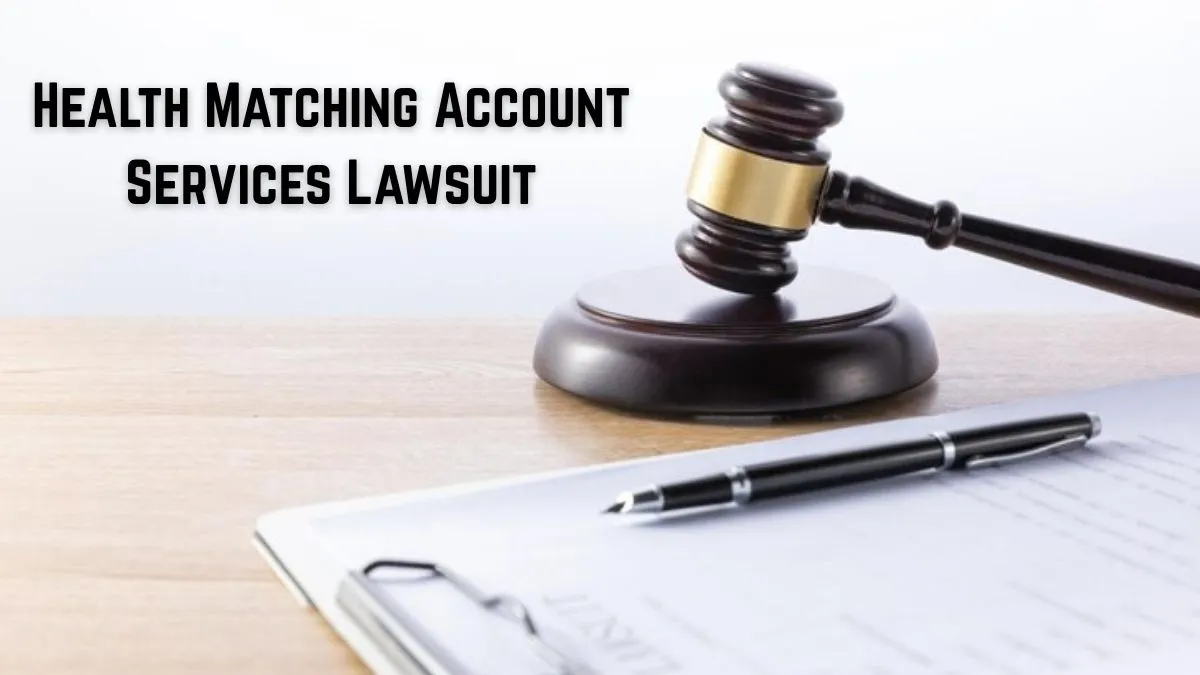LAW
Health Matching Account Services Lawsuit

The Health Matching Account Services Lawsuit has caught the attention of many due to its serious allegations of fund misuse and customer complaints. The company, based in Houston, Texas, promised consumers that they could manage their healthcare costs effectively by providing matching contributions for health savings accounts (HSAs). However, numerous customers have reported difficulties accessing their funds and receiving reimbursements for legitimate medical expenses. These issues have prompted a broader discussion about the trustworthiness of HMAS’s practices, its financial management, and the company’s overall customer service. This article delves into the details of the case, the customer complaints, and the potential outcomes of the lawsuit.
Who Is Health Matching Account Services (HMAS)?
Health Matching Account Services (HMAS) operates as a financial service company that focuses on delivering health savings accounts to customers. Health savings accounts enable people to reserve their medical funds through untaxed contributions. HMAS presented its service as a healthcare expense management solution because it enabled customers to save money easily while funding their medical treatments. Customers found the Health Matching Account Services appealing because they promised to match customer contributions for medical expenses payment assistance.
What Led to the Lawsuit Against HMAS?
The Health Matching Account Services lawsuit emerged because multiple customer complaints revealed concerning business operations at the company. Various customers have asserted that HMAS did not deliver on the terms that provided health savings funds access. Customers who deposited funds into their accounts lost the ability to access their savings at crucial times, resulting in both bewilderment and financial trouble.
A growing number of disgruntled customers filed personal lawsuits that turned into a widespread class-action suit now underway. The legal action charges HMAS with breaking its customer service agreements and not handling customer funds with care according to the terms established by the contract.
Allegations of Fund Misuse: What Customers Reported
- Failure to Match Contributions: One of the key allegations in Health Matching Account Services Lawsuit failed to provide the promised matching contributions. Many customers who expected to receive additional funds to help with their medical expenses reported that they did not receive the expected match.
- Difficulty Accessing Funds: Customers who tried to access their health savings funds for medical reimbursements found themselves unable to do so. Some reported delays of weeks or even months, leaving them to pay for medical expenses out of pocket.
- Arbitrary Rule Changes: Another significant issue that has surfaced is the frequent and sudden changes to the rules governing the use of funds. Some customers were caught off guard by new restrictions or additional requirements that made it difficult for them to access the money they had already contributed.
- Unfulfilled Payments to Healthcare Providers: There have been numerous reports from healthcare providers stating that payments owed to them by HMAS on behalf of customers were never made. This has led to unpaid bills and further financial hardship for customers.
Health Matching Account Services’ Response to the Allegations
HMAS has strongly refuted all claims of wrong conduct that have been raised. The organization maintains that its health savings account program establishes procedures to enable patients to effectively handle their medical bill expenses. HMAS states that the reported customer system delays, together with administrative errors, came from technical difficulties while refuting deliberate improper behavior.

HMAS defends its conduct by declaring its commitment to addressing any problems that occur alongside its constant dedication to acting with good faith. HMAS continues to focus on resolving customer problems through active dedication and legal authority cooperation to provide complete issue solutions. Numerous customers express dissatisfaction with HMAS’s handling of their complaints, even though the company maintains good intentions. The class-action lawsuit continues.
Better Business Bureau (BBB) Rating and Actions Against HMAS
The widespread customer complaints, along with the ongoing Health Matching Account Services Lawsuit, led the Better Business Bureau (BBB) to take measures against HMAS. HMAS lost its BBB membership status with the organization, structured an “F” rating being its most severe performance assessment option.
Companies receiving an “F” rating from the BBB most likely overlooked major customer complaints or broke ethical business conduct standards established by the organization. The BBB removal of HMAS membership demonstrates the seriousness of problems facing the company and leads to more harm to its reputation.
How the HMAS Program Was Supposed to Work
HMAS’s program established an easy and effective system that let people build medical funds. Under this program, customers gained the opportunity to double their healthcare cost funds through a matching contribution system established by the program. High medical costs, together with expensive insurance premiums, made this program highly attractive to struggling patients.
Each month, HMAS customers needed to fund their health savings account, while HMAS added matching funds to those deposits. Customers could draw medical reimbursements easily from these funds according to the company’s promise, which functioned as financial protection for sudden health expenses. Numerous customers experienced great trouble when they attempted to withdraw their funds from their health savings accounts.
Potential Outcomes: What Could Happen Next?
- Financial Penalties: HMAS could be ordered to pay damages, including refunds for contributions and compensation for unpaid medical expenses.
- Business Changes: HMAS may need to revise practices to ensure easier access to funds and proper contribution matching.
- Regulatory Action: Health Matching Account Services Lawsuit could lead to investigations and potential fines or legal consequences for HMAS.
What Customers Should Do If They Are Affected
All customers who encounter problems regarding fund withdrawals and match contributions from HMAS need to take immediate steps. Begin by collecting all paperwork about your financial contributions, details about medical expenses, alongside documents that HMAS sent you. Your claim regarding the lawsuit will gain stronger support from documented evidence.
Victims should seek legal advice from a specific lawyer who focuses on handling class-action claims to learn about their rights during these situations. Your lawyer will guide you through the lawsuit process after becoming eligible to join if you choose to participate. They will help you recover compensation for whatever losses or damages you suffered..
How the Health Matching Account Services Lawsuit Could Impact Health Savings Programs
The resolution of the HMAS lawsuit will create consequences for all health savings plans operating in the market. An unfavorable ruling against HMAS in this lawsuit will result in a closer examination of health savings programs provided by other companies. Health savings account management will possibly face stricter regulations from regulatory authorities because of their responsibility to protect consumers and prevent mismanagement.
The Health Matching Account Services Lawsuit outcome might cause consumers to adopt greater caution toward participating in similar health savings plans while demanding clear remarks and accountability procedures from companies providing health savings management. Better consumer protection measures and stronger industrial oversight would emerge from this situation.
Latest Updates on the HMAS Lawsuit (2025)
As of 2025, the Health Matching Account Services Lawsuit is still ongoing. The legal team representing the affected customers continues to gather evidence and build the case against HMAS. While the company has denied all allegations and continues to defend itself in court, the growing number of complaints and the involvement of regulatory agencies suggest that the company may face significant consequences if the case progresses further.
Conclusion
HMAS stands under legal scrutiny to demonstrate the essential factors of health, financial service transparency, and dependable operations with good customer outcomes. Health savings account providers are obligated to maintain their commitments by delivering transparent communication to their customers. Consumers need to dedicate time to a comprehensive investigation of financial companies before placing their money at their disposal.
-

 BIOGRAPHY7 months ago
BIOGRAPHY7 months agoBehind the Scenes with Sandra Orlow: An Exclusive Interview
-

 HOME1 year ago
HOME1 year agoDiscovering Insights: A Deep Dive into the //vital-mag.net blog
-

 HOME1 year ago
HOME1 year agoSifangds in Action: Real-Life Applications and Success Stories
-

 BIOGRAPHY1 year ago
BIOGRAPHY1 year agoThe Woman Behind the Comedian: Meet Andrew Santino Wife




























